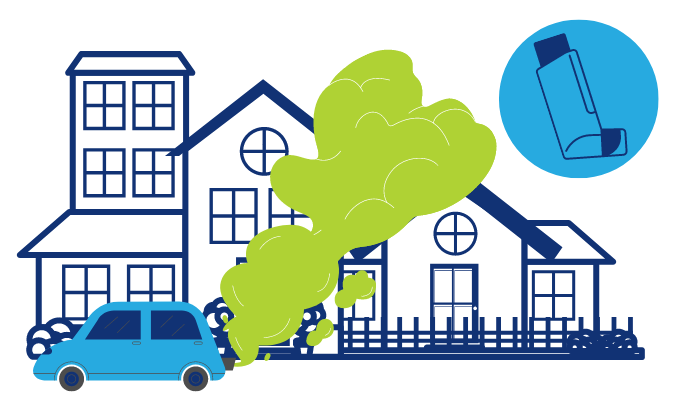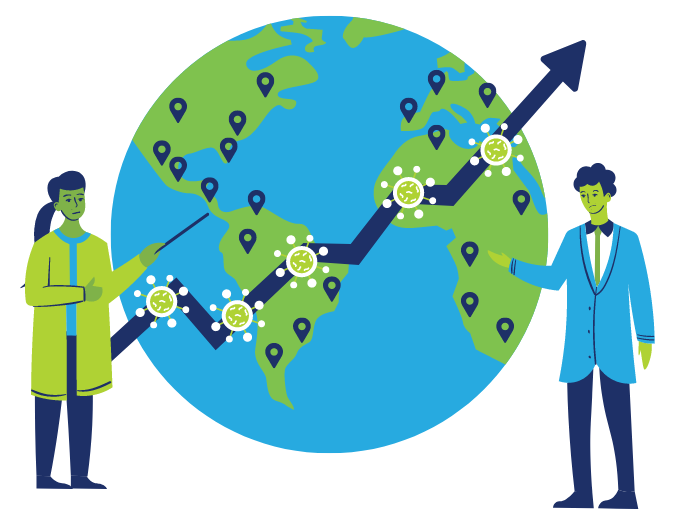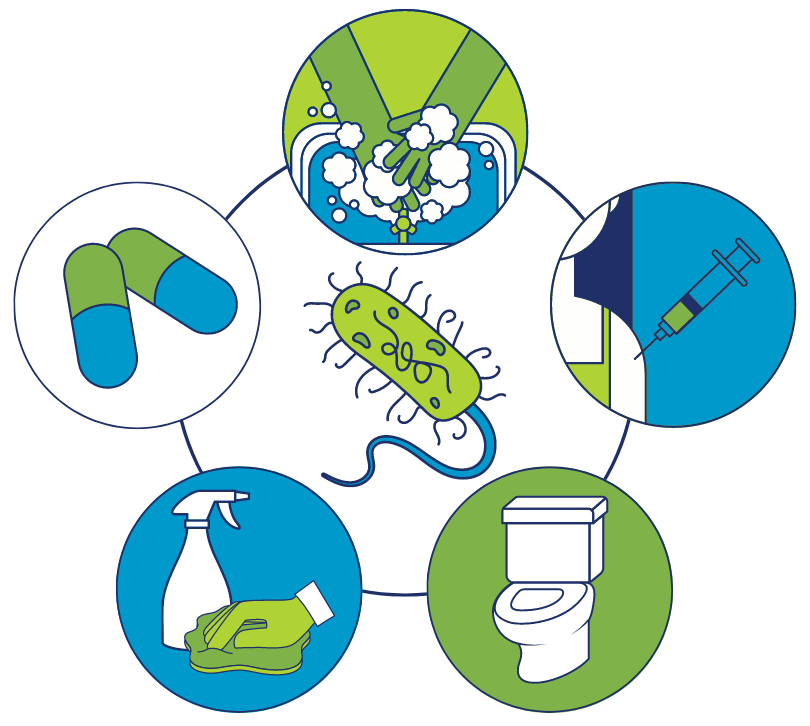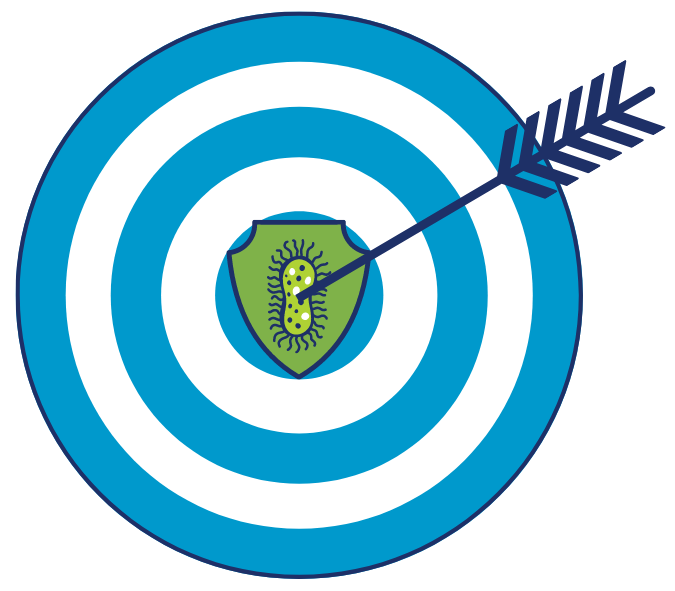
When COVID-19 started spreading around the world, many groups of indigenous people knew just what to do. They retreated into the forests they knew so well, an isolation practice that had helped their forebears survive countless other outbreaks, epidemics, and pandemics.
But their survival skills didn’t stop there. Away from modern methods of food production, they turned to their knowledge of local, traditional foods to stay comfortable and healthy.
Dr. Carol Zavaleta-Cortijo, a public health researcher at the Universidad Peruana Cayetano Heredia, studies indigenous groups such as the Shawi people in the Amazonian region of Peru and the Irula and Kurumba communities in Tamil Nadu, India. During the pandemic, she found that these groups made good use of their skills and knowledge that had been passed down orally over generations to get through the pandemic. She says these skills will help them survive the effects of climate change and other disasters as well.
Many indigenous communities applied the One Health approach – acknowledging the interconnectedness of the health of the environment, animals, and humans – in their way of life long before the term was coined. In this episode of One World, One Health, Dr. Zavaleta-Cortijo chats with host Maggie Fox about what she’s learned from these indigenous groups, and what all of us can learn from them about resilience and protecting our planet.
Maggie Fox 00:00
Hello and welcome to One World, One Health with the latest ideas to improve the health of our planet and its people. I’m Maggie Fox. All of us here on planet Earth are facing problems, such as pollution, climate change, and infectious diseases (both old and new). All of these problems are connected. This podcast is brought to you by the One Health Trust with bite-sized insights into ways to help.
During the first months of the COVID pandemic, the Shawi people living in Peru’s Amazon closed their borders and retreated to the forest. So did some people in Tamil Nadu in India. It worked. They survived better and were able to turn to traditional foods to help make it through the isolation. In this episode, we’re chatting with Dr. Carol Zavaleta of Cayetano Heredia University in Lima, Peru. She studies how indigenous communities around the world cope with challenges, especially to their health. Carol, thank you so much for joining us.
Carol Zavaleta-Cortijo 00:57
Hi, Maggie! Now it is really a pleasure and an honor to have this space to talk with you. Thank you for the invitation.
Maggie Fox 01:04
Well, you’re studying how indigenous people around the world use some of their traditions to survive disasters–from drought to the COVID pandemic. And you’re speaking to us from Peru for this podcast episode. So, why don’t we start there? When COVID started spreading, how did some of the people who live in the Amazon protect themselves?
Carol Zavaleta-Cortijo 01:27
So, when we had this pandemic, they organized themselves. So, they have this —— customary government system where they have —— and they have these meetings, these (assembly) community assemblies where they decide that they are going to close their lands. So, maybe you are wondering how you can close the Amazon because the Amazon is super spread and super open, right? (So) But they have particular roads, (some) particular trails, and paths that they know, and they put signals and also write letters that say that it is forbidden to go in this community. And they also put some (like a) plants that have a very bad smell.
So, they put it on the entrance or something that they prefer the community to be like, nobody can be here. And they stay in their community, but they go to the forest. So, they don’t stay in the —— community. So, they went to the forest. And they separate themselves. So, they isolate between communities, even if we didn’t teach them (that).
So, as a public health people, we say we need to do all this social distance and all the things (right?). So, they did it by just naturally learning that they knew from past pandemics. So, they have a knowledge system that they have learned over multiple pandemics and they translate or transmit the information orally to these new generations.
Maggie Fox 02:48
Okay, this is an important point that you just made. They have this knowledge from previous pandemics because one of the things we know about the European conquest of the Americas is they brought a lot of diseases with them and most of the populations were wiped out by these diseases. Tell us about how these pockets of indigenous peoples learned to survive these pandemics?
Carol Zavaleta-Cortijo 03:12
Yes, Maggie. This is very important (right!) to connect our story in Peru in Latin America with colonization. And I think this is important because we knew there’s literature (on) how many indigenous societies have collapsed, but those who didn’t collapse (they) have learned and specific examples, for example, the people that we have been working over these two, three years, they remember cholera, for example.
So, they remember when they were children and how cholera killed some of them. They also remember smallpox. So, they remember how they were affected. And what they used (to do) was to go to the forest to separate themselves to (remain) social isolated. So, this knowledge stay in their minds. They also, for example, these days, they are facing malaria, they are facing dengue, all these special diseases that we have. Unfortunately, there is no solutions for that. But for the pandemic (and) for those (diseases) who were like a global threat, they have this knowledge.
Maggie Fox 04:08
Did it work? Did hiding out, so to speak, during the first months of the COVID pandemic protect people?
Carol Zavaleta-Cortijo 04:15
Yes, yes, definitely. And I knew, for example, that at least (for) four months, they were isolated (and) they went to the forest. (But) what happened is that when you go to the forest, you can collect the natural food. But they also started to grow their own food. So, they plant cassava, they plant plantains, fruits (etc.). Mostly, they have different varieties of potatoes. So, people usually think of potatoes —— the highlands, but also in the Amazon, there are tubers, multiple tubers, and they plant all these but they take time–four months, six months–to grow.
And, also at the same time, they weren’t thinking about their domestic animals because they grow their small animals like free range chickens (and things). So, they return to their community at some point and in the community, finally some (people) got the infection. So, they got the symptoms, but those didn’t last forever. So, the forests allowed the protection for some months.
And ideally for the future, for example, we can get those months to do something, right. So we can at least give us a window of opportunity to prepare our systems, our health systems to support our brothers and sisters (in these indigenous communities).
Maggie Fox 05:29
And this turning to kind of more traditional foods that can be raised in the forest (is this something that) will give them resilience against other disasters going forward?
Carol Zavaleta-Cortijo 05:39
Yes, I think it is. Our global agrifood systems rely on very few crops, right. But they have all these varieties. And they can substitute. They can use it seasonal so (that) they don’t use it at the same time. And so, they can access different types of foods over the year. The only thing is that we need to (also) follow indigenous values. So, this system is not just production, this system also is connected with value–how they see the land, how they see the food. And I have learned this —— from the Shawi (that) when you harvest cassava, you plant another cassava.
So, you don’t easily just get one and just forget about that. They are constantly thinking about this concept that we call sustainability. So, what they actually think is that, for example, if you go to the forest and catch an animal or something in the forest, or fish, they don’t simply —— (use it for) food. So, they when they have more food that they can consume, they share it. We can measure, for example, food waste, we can find solutions, and all these systems are indigenous values about the relationship with food.
Maggie Fox 06:48
And what about traditional medicines as well. You’ve done a lot of research on that. Now to the Western eye, this can sound a little woowoo (that), you know, there’s a plant that has medicinal qualities. But you’re a physician as well as a scientist. Tell us what you’ve learned about these traditional medicines.
Carol Zavaleta-Cortijo 07:06
Thank you, Maggie. Thank you because this is a very important question for me. When I went the first time to the Amazon, I went as a physician. I went to start my clinical practice. And my first patients were people living with HIV, and they were indigenous people. And then I tried to observe them. And they didn’t want to actually visit my health facility where I was a physician, and I was wondering why because I felt I was a good physician (I care). So, I was wondering why they didn’t come to look for my services. So, I went to talk with them. And actually, I discovered that they have a (completely) different medical system. So, they didn’t need me at that point. So, they said why (right!).
So, at some point, I understood that I need to provide something different for them if I want (to) really serve them in a good way. So, at that point is when I turn and change in some way my discipline and turn to do like a more social environmental scientist. And in (this) COVID, for example, we observe that they use herbs, different herbs, not only in Peru. In Peru, the Shawi, the Ashaninka, the Shipibo in my country, but also —— in Uganda, and (also) in India.
So, they are using herbs, they are using the traditional knowledge. And what happened is that yeah, we want to use clinical trials, we want to use these scientific methods to prove the value of these indigenous knowledge. But I don’t think that we are at that point where we can really prove with scientific methods that what is happening there. Because in Bolivia, for example, where I believe the Minister of Health has created a book, an official book, where they have more than fifty different plants and herbs (catalogue) for different symptoms for COVID. So, they, based on symptoms in some way, solve the health situations.
And, I think that we should be more humbled to understand how the knowledge of indigenous science works before we want to say we want to validate. Obviously, Western science has a different approach and I recognize that because in the COVID, we saw these cases where it gets very worse. This patient, she got, for example, kidney failure, and that was important because she didn’t want to continue to use indigenous medicine and we went to convince her that she needs more help.
So, at the end, she went to the hospital and we went with her because the other thing is that the (people in the) health facility don’t speak the indigenous language. And, also the cultural awareness is not necessarily in the health facility. So we work on navigating all these situations. And finally, my patient, she got that kidney transplant, and I think it was a huge achievement from the medicine (and) from the science. And I recognize that. I think both medical systems have a place for these emergencies.
Maggie Fox 09:57
So it’s not one or the other. It’s how both can work together.
Carol Zavaleta-Cortijo 10:01
Right, Maggie. The good thing is that we are living in this world so we have these opportunities.
Maggie Fox 10:06
You’ve said that many indigenous people have approaches to life in the land that align with One Health principles. Can you talk about some of these?
Carol Zavaleta-Cortijo 10:14
Yes, Maggie. I think, and also my work before wasn’t really One Health. But now, I am learning with them. And they are teaching me that nature is not separate from human health. When I went to the med school and many people who went to med school, nobody talks about nature when you are studying medicine because you will fix people (and) you will cure (you’re a healer) but not necessarily with nature. Most of the things that we are using our technologies, right, we’re just stuck with equipment, we just vary in protocol for the diagnostics (all these things).
But what happened with indigenous people is that when we, for example, see that they are using rituals, they are using this colorful music and things, we think that maybe this is only art or maybe this is just for tourism or folklore. But actually no. We need to see that those rituals actually are the connections between them and nature. So, this is how they communicate with nature and how they are providing and giving their respect to nature ——.
For example, in Bolivia, (there) is a month of the Pachamama, where indigenous communities and actually the country attends to the Pachamama (the Mother Earth). And in June, (there) is a month (when the people) provide their respects to the Inti who is the Sun God.
So, all these connections imply that animals, plants, minerals, air, weather, everything that you have in nature will give you health. I think that’s very important because you acknowledge the health of humans, while you are also acknowledging the surroundings and natural resources around you.
Maggie Fox 11:56
So, how can people in developed countries learn from these people who have stayed closer to their indigenous practices?
Carol Zavaleta-Cortijo 12:03
I think the first thing is to recognize and (to) not assume that there’s only one way of life. And there’s not only one way of best life and not anyone need to aspire to only one way of life or one way of medicine. I think it’s important to remember that each society has created great technology. My society, indigenous people, countries in South America, in other regions have also created technology and science. But we think our technology is less recognized, less investigated, (and) less disseminated.
And I think developed countries need to remember that colonization (has) also changed our lives, and also implies that there are many information that has been lost or stolen. And I think at this moment, we have the indigenous people, for example, inhabit 20% of our planet, but we have 80% of biodiversity in their lands. So, something is happening in those territories that we don’t know (about). I think it’s important to keep our minds reflective, open, and try to build together this new era that climate change has opened our eyes to work in an intersectional way, but also in an interconnected way with knowledges.
Our world is not the same after the pandemic, especially because we have learned how fragile our health system is. And I think we need to be prepared for future pandemics and use the learning that we have collected. And also, we need to use all our resources, all the resources that we have, to create a better health system and a better world for everyone, not only for humans, but also for plants and for these historically neglected populations —— .
Maggie Fox 13:51
Carol, thank you so much for joining us.
Carol Zavaleta-Cortijo 13:54
Maggie, this is (a) great conversation. Thank you for making me think on these things. They are very important. Thank you.
Maggie Fox 14:01
If you liked this podcast, which is brought to you by the One Health Trust, please share it by email or on social media. And let us know what else you’d like to hear about at [email protected]. Thanks for listening.
Maggie Fox 00:00
Hola y bienvenido a One World, One Health con las últimas ideas para mejorar la salud de nuestro planeta y su gente. Soy Maggie Fox. Todos nosotros aquí en el planeta Tierra enfrentamos problemas como la contaminación, el cambio climático y las enfermedades infecciosas (tanto antiguas como nuevas). Todos estos problemas están conectados. Este podcast es presentado por One Health Trust con información breve sobre formas de ayudar.
Durante los primeros meses de la pandemia de COVID, el pueblo Shawi que vivía en la Amazonía peruana cerró sus fronteras y se retiró a la selva. Lo mismo hicieron algunas personas en Tamil Nadu, en la India. Funcionó. Sobrevivieron mejor y pudieron recurrir a alimentos tradicionales para superar el aislamiento. En este episodio, conversamos con la Dra. Carol Zavaleta de la Universidad Cayetano Heredia en Lima, Perú. La dra. Carol estudia cómo las comunidades indígenas de todo el mundo afrontan los desafíos, especialmente en materia de salud. Carol, muchas gracias por acompañarnos.
Carol Zavaleta-Cortijo 00:57
¡Hola Maggie! Ahora es realmente un placer y un honor tener este espacio para conversar con ustedes. Gracias por la invitación.
Maggie Fox 01:04
Bueno, estás estudiando cómo los pueblos indígenas de todo el mundo utilizan algunas de sus tradiciones para sobrevivir a los desastres, desde la sequía hasta la pandemia de COVID. Y nos estás hablando desde Perú para este episodio de podcast. Entonces, ¿por qué no empezamos por ahí? Cuando el COVID comenzó a propagarse, ¿cómo se protegieron algunas de las personas que viven en el Amazonas?
Carol Zavaleta-Cortijo 01:27
Entonces, cuando tuvimos esta pandemia, se organizaron. Entonces, tienen este —— sistema de gobierno consuetudinario donde tienen estas reuniones, estas asambleas comunitarias donde deciden que van a cerrar sus tierras. Entonces, tal vez te estés preguntando cómo puedes cerrar el Amazonas porque el Amazonas está súper extendido y súper abierto, ¿verdad? (Entonces) Pero tienen caminos particulares, (algunos) senderos particulares, y caminos que conocen, y ponen señales y también escriben cartas que dicen que está prohibido entrar en esta comunidad. Y también ponen unas plantas que tienen muy mal olor.
Entonces lo ponen en la entrada o algo así prefieren que sea la comunidad, aquí no puede estar nadie. Y se quedan en su comunidad, pero se van al bosque. Entonces, no se quedan en la —— comunidad. Entonces se fueron al bosque. Y se separan. Entonces, se aíslan entre comunidades, incluso si no les enseñamos (eso).
Entonces, como gente de salud pública, decimos que tenemos que hacer toda esta distancia social y todo eso (¿verdad?). Entonces, lo hicieron aprendiendo naturalmente lo que sabían de pandemias pasadas. Entonces, tienen un sistema de conocimientos que han aprendido a lo largo de múltiples pandemias y traducen o transmiten la información de forma oral a estas nuevas generaciones.
Maggie Fox 02:48
Bien, este es un punto importante que acabas de señalar. Tienen este conocimiento de pandemias anteriores porque una de las cosas que sabemos sobre la conquista europea de América es que trajeron consigo muchas enfermedades y la mayoría de las poblaciones fueron aniquiladas por estas enfermedades. Cuéntenos cómo estos grupos de pueblos indígenas aprendieron a sobrevivir a estas pandemias.
Carol Zavaleta-Cortijo 03:12
Sí, Maggie. Esto es muy importante (¡verdad!) para conectar nuestra historia en Perú y en América Latina con la colonización. Y creo que esto es importante porque sabíamos que hay literatura sobre cuántas sociedades indígenas han colapsado, pero aquellas que no colapsaron han aprendido y tienen ejemplos específicos, por ejemplo, las personas con las que hemos estado trabajando en estos dos, tres años recuerdan el cólera, por ejemplo.
Entonces recuerdan cuando eran niños y cómo el cólera mató a algunos de ellos. También recuerdan la viruela. Entonces recuerdan cómo fueron afectados. Y lo que solían hacer era ir al bosque a separarse para permanecer aislados socialmente. Entonces, este conocimiento permanece en sus mentes. También, por ejemplo, estos días se enfrentan a la malaria, al dengue, a todas estas enfermedades especiales que tenemos. Desafortunadamente, no hay soluciones para eso. Pero para la pandemia y para aquellas enfermedades que eran como una amenaza global, tienen este conocimiento.
Maggie Fox 04:08
¿Funcionó? ¿Esconderse, por así decirlo, durante los primeros meses de la pandemia de COVID protegió a las personas?
Carol Zavaleta-Cortijo 04:15
Sí, sí, definitivamente. Y supe, por ejemplo, que al menos (durante) cuatro meses estuvieron aislados (y) se fueron al bosque. (Pero) lo que pasó es que cuando vas al bosque, puedes recolectar alimento natural. Pero también empezaron a cultivar sus propios alimentos. Entonces, siembran yuca, siembran plátano, frutas (etc.). Principalmente tienen diferentes variedades de papas. Entonces, la gente generalmente piensa en las papas: en las tierras altas, pero también en el Amazonas, hay tubérculos, múltiples tubérculos, y los plantan todos, pero tardan cuatro meses, seis meses en crecer.
Y, al mismo tiempo, no pensaban en sus animales domésticos porque crían a sus animales pequeños como pollos de corral (y cosas así). Entonces, regresan a su comunidad en algún momento y en la comunidad, finalmente algunas (personas) contrajeron la infección. Entonces, tuvieron los síntomas, pero no duraron para siempre. Así, los bosques permitieron la protección durante algunos meses.
E idealmente para el futuro, por ejemplo, podemos aprovechar esos meses para hacer algo, ¿verdad? De modo que al menos podamos darnos una ventana de oportunidad para preparar nuestros sistemas, nuestros sistemas de salud, para apoyar a nuestros hermanos y hermanas (en estas comunidades indígenas).
Maggie Fox 05:29
¿Y este cambio hacia alimentos más tradicionales que se pueden cultivar en el bosque (es esto algo que) les dará resiliencia contra otros desastres en el futuro?
Carol Zavaleta-Cortijo 05:39
Sí, creo que lo es. Nuestros sistemas agroalimentarios globales dependen de muy pocos cultivos, ¿verdad? Pero tienen todas estas variedades. Y pueden sustituir. Pueden usarlo estacionalmente para no usarlo al mismo tiempo. Y así, pueden acceder a diferentes tipos de alimentos a lo largo del año. Lo único es que debemos (también) seguir los valores indígenas. Entonces, este sistema no es sólo producción, este sistema también está conectado con el valor: cómo ven la tierra, cómo ven la comida. Y he aprendido esto —— de los Shawi (que) cuando se cosecha yuca, se planta otra yuca.
Por lo tanto, no es fácil conseguir uno y olvidarse de eso. Están constantemente pensando en este concepto que llamamos sostenibilidad. Entonces, lo que realmente piensan es que, por ejemplo, si vas al bosque y atrapas un animal o algo en el bosque, o pescas, no lo usan simplemente como alimento. Entonces, cuando tienen más comida que pueden consumir, la comparten. Podemos medir, por ejemplo, el desperdicio de alimentos, podemos encontrar soluciones, y todos estos sistemas son valores autóctonos sobre la relación con los alimentos.
Maggie Fox 06:48
¿Y qué pasa también con las medicinas tradicionales? Has investigado mucho sobre eso. Ahora bien, para el ojo occidental, esto puede sonar un poco fantástico (que, ya sabes, hay una planta que tiene cualidades medicinales). Pero usted es médico además de científico. Cuéntanos qué has aprendido sobre estas medicinas tradicionales.
Carol Zavaleta-Cortijo 07:06
Gracias Maggie. Gracias porque esta es una pregunta muy importante para mí. Cuando fui por primera vez al Amazonas, fui como médico. Fui a iniciar mi práctica clínica. Y mis primeros pacientes fueron personas que vivían con VIH y eran indígenas. Y luego traté de observarlos. Y en realidad no querían visitar mi centro de salud donde yo era médico, y me preguntaba por qué porque sentía que era un buen médico (me importa). Entonces me preguntaba por qué no vinieron a buscar mis servicios. Entonces fui a hablar con ellos. Y de hecho descubrí que tienen un sistema médico (completamente) diferente. Entonces, no me necesitaban en ese momento. Entonces, dijeron por qué (¡correcto!).
Entonces, en algún momento, entendí que necesito brindarles algo diferente si realmente quiero servirles de una buena manera. Entonces, en ese punto es cuando giro y cambio de alguna manera mi disciplina y vuelvo a actuar como un científico ambiental más social. Y en (este) COVID, por ejemplo, observamos que usan hierbas, diferentes hierbas, no solo en el Perú. En Perú, los Shawi, los Ashaninka, los Shipibo en mi país, pero también —— en Uganda, y (también) en la India.
Entonces, están usando hierbas, están usando el conocimiento tradicional. Y lo que pasó es que sí, queremos utilizar ensayos clínicos, queremos utilizar estos métodos científicos para demostrar el valor de estos conocimientos indígenas. Pero no creo que estemos en ese punto en el que realmente podamos probar con métodos científicos lo que está sucediendo allí. Porque en Bolivia, por ejemplo, donde creo que el ministro de Salud ha creado un libro, un libro oficial, donde tienen más de cincuenta plantas y hierbas diferentes (catálogo) para diferentes síntomas del COVID. Entonces, ellos, a partir de los síntomas, de alguna manera solucionan las situaciones de salud.
Y creo que deberíamos sentirnos más humildes al comprender cómo funciona el conocimiento de la ciencia indígena antes de decir que queremos validarlo. Obviamente, la ciencia occidental tiene un enfoque diferente y lo reconozco porque en el COVID vimos estos casos en los que la situación empeora mucho. A esta paciente le dio por ejemplo insuficiencia renal y eso fue importante porque ella no quería seguir usando la medicina indígena y fuimos a convencerla de que necesita más ayuda.
Entonces al final ella fue al hospital y nosotros fuimos con ella porque lo otro es que en el establecimiento de salud no hablan la lengua indígena. Y además la conciencia cultural no está necesariamente en el establecimiento de salud. Por eso trabajamos para afrontar todas estas situaciones. Y finalmente, mi paciente recibió ese trasplante de riñón, y creo que fue un gran logro desde la medicina (y) desde la ciencia. Y lo reconozco. Creo que ambos sistemas médicos tienen un lugar para estas emergencias.
Maggie Fox 09:57
Entonces no es ni lo uno ni lo otro. Así es como ambos pueden trabajar juntos.
Carol Zavaleta-Cortijo 10:01
Bien, Maggie. Lo bueno es que vivimos en este mundo y tenemos estas oportunidades.
Maggie Fox 10:06
Usted ha dicho que muchos pueblos indígenas tienen enfoques de la vida en la tierra que se alinean con los principios de “Salud única”. ¿Puedes hablar sobre algunos de estos?
Carol Zavaleta-Cortijo 10:14
Sí, Maggie. Creo, y además mi trabajo anterior no era realmente “Salud única”. Pero ahora estoy aprendiendo con ellos. Y me están enseñando que la naturaleza no está separada del corazón humano. Cuando yo fui a la facultad de medicina y mucha gente que fue a la facultad de medicina, nadie habla de la naturaleza cuando estudias medicina porque puedes arreglar a las personas (y) curar (eres un sanador), pero no necesariamente con la naturaleza. La mayoría de las cosas que utilizamos nuestras tecnologías, cierto, simplemente estamos atrapados con el equipo, simplemente variamos en el protocolo para el diagnóstico (todas estas cosas).
Pero lo que pasó con los pueblos indígenas es que cuando nosotros, por ejemplo, vemos que están usando rituales, están usando esta música colorida y esas cosas, pensamos que tal vez esto es solo arte o tal vez es solo para turismo o folklore. Pero en realidad no. Necesitamos ver que esos rituales en realidad son conexiones entre ellos y la naturaleza. Entonces, así es como se comunican con la naturaleza y cómo le brindan y respetan a la naturaleza ——.
Por ejemplo, en Bolivia hay un mes de la Pachamama, donde las comunidades indígenas y de hecho el país atiende a la Pachamama (la Madre Tierra). Y en junio, (hay) un mes (en el que la gente) brinda sus respetos al Inti que es el Dios Sol.
Entonces, todas estas conexiones implican que los animales, las plantas, los minerales, el aire, el clima, todo lo que tienes en la naturaleza te dará salud. Creo que eso es muy importante porque reconoces la salud de los humanos, al mismo tiempo que reconoces el entorno y los recursos naturales que te rodean.
Maggie Fox 11:56
Entonces, ¿cómo pueden las personas de los países desarrollados aprender de estas personas que se han mantenido más cercanas a sus prácticas indígenas?
Carol Zavaleta-Cortijo 12:03
Creo que lo primero es reconocer y no asumir que sólo hay una forma de vida. Y no existe sólo una forma de vida mejor y nadie necesita aspirar a una sola forma de vida o a una sola forma de medicina. Creo que es importante recordar que cada sociedad ha creado una gran tecnología. Mi sociedad, los pueblos indígenas, los países de América del Sur, de otras regiones también han creado tecnología y ciencia. Pero creemos que nuestra tecnología está menos reconocida, menos investigada y menos difundida.
Y creo que los países desarrollados deben recordar que la colonización también ha cambiado nuestras vidas, y también implica que hay mucha información que se ha perdido o ha sido robada. Y creo que en este momento tenemos a los pueblos indígenas, por ejemplo, que habitan el 20% de nuestro planeta, pero tenemos el 80% de la biodiversidad en sus tierras. Entonces, algo está sucediendo en esos territorios que no sabemos. Creo que es importante mantener nuestra mente reflexiva, abierta y tratar de construir juntos esta nueva era en la que el cambio climático nos ha abierto los ojos para trabajar de manera interseccional, pero también interconectada con los conocimientos.
Nuestro mundo no es el mismo después de la pandemia, especialmente porque hemos aprendido lo frágil que es nuestro sistema de salud. Y creo que debemos estar preparados para futuras pandemias y utilizar el aprendizaje que hemos recopilado. Y también necesitamos usar todos nuestros recursos, todos los recursos que tenemos, para crear un mejor sistema de salud y un mundo mejor para todos, no solo para los humanos, sino también para las plantas y para estas poblaciones históricamente desatendidas. — .
Maggie Fox 13:51
Carol, muchas gracias por acompañarnos.
Carol Zavaleta-Cortijo 13:54
Maggie, esta es una gran conversación. Gracias por hacerme pensar en estas cosas. Son muy importantes. Gracias.
Maggie Fox 14:01
Si le gustó este podcast, presentado por One Health Trust, compártalo por correo electrónico o en las redes sociales. Y háganos saber qué más le gustaría saber en [email protected] . Gracias por su atención.
Guest
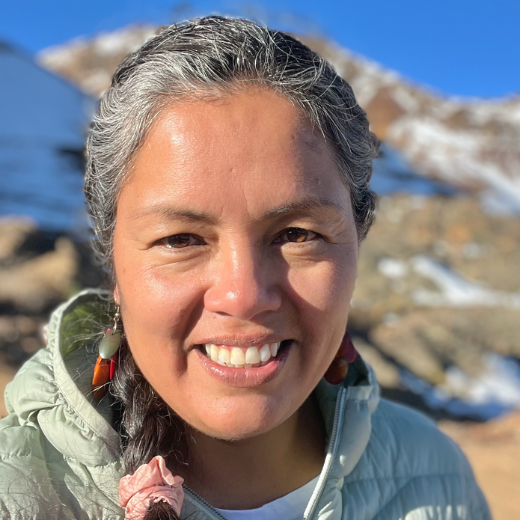
Dr. Carol Zavaleta-Cortijo is a Peruvian physician and socio-environmental scientist working at Cayetano Heredia University in Peru who lives in Bolivia. Carol previously lived in Canada while she was completing her PhD in health geography at McGill University. Carol is a founding member of The Indigenous Peoples Observatory Network (IPON). IPON is a network of Indigenous and non-Indigenous researchers, decision-makers, NGOs, and community members who have come together to better understand and respond to threats facing Indigenous communities globally, building resilience to manage global change. Their vision is to transform and rethink how we understand the food-climate-health nexus from the bottom-up, building on multiple ways of knowing embodied in Indigenous knowledge and science, including Indigenous cosmogonies that are closely connected with nature. They look to strengthen community resilience to multiple stresses and support actions that benefit Indigenous peoples. They want to promote a people-focused approach that encourages learning from each other and learning together.
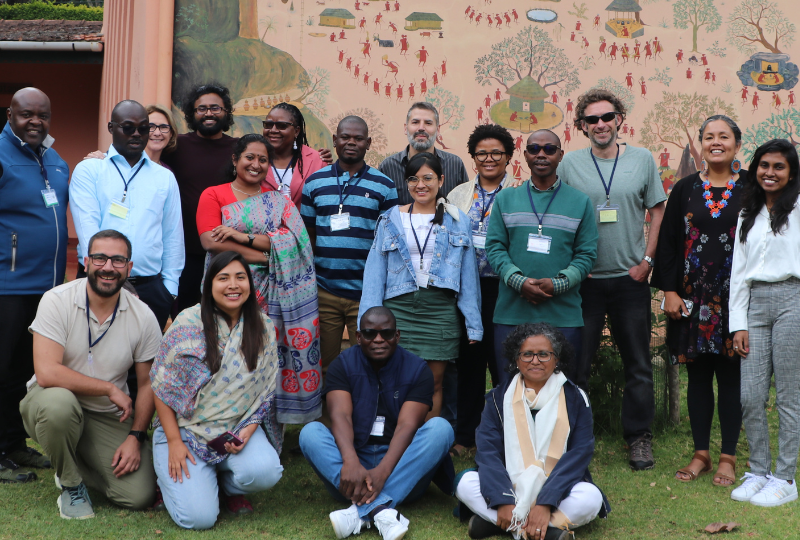
Credits
Hosted and written by Maggie Fox
Special guest: Carol Zavaleta-Cortijo
Produced and edited by Samantha Serrano
Music composed and sound edited by Raquel Krügel
Transcript edited by Dipyaman Sengupta

